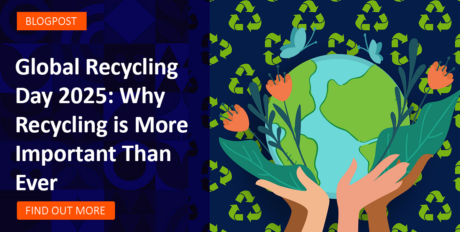Contact us today for your Free Quote
Minimising your carbon footprint can be challenging, as almost everything we do generates carbon in some form. Whether it’s something we eat, buy, or use, each action contributes to CO2 emissions, which drive global warming and the heating of our planet. While reducing your direct emissions is crucial, you can also explore carbon offsetting to help neutralise your environmental impact.
How to Track Your Carbon Footprint
Understanding and tracking your carbon footprint may seem complex, but there are many tools available to help simplify the process. Here are some of the best carbon measurement tools we’ve found:
WWF’s Footprint Calculator: This tool surveys your lifestyle to provide an estimate of your annual emissions.
Ailuna: A sustainability engagement app that gamifies your efforts, educates you on sustainable living, and helps you track your actions to demonstrate your positive impact on the planet.
Bywaters BRAD: Tracks emissions from your waste and waste collections. It provides accurate reporting of associated carbon emissions for use in your Scope 3 reporting and demonstrates recycling and incineration rates. Additionally, it offers recommendations for reducing emissions.
Planet Mark: A sustainability certification and net-zero provider that helps organisations measure their carbon emissions and find areas for improvement. Bywaters has partnered with Planet Mark for over 10 years — read our case study to learn more.
What You Can Do to Reduce Your Carbon Footprint
1. Choose Greener Transportation
Instead of driving to work, consider cycling. Unlike cars that burn fossil fuels and emit carbon dioxide (CO2), a significant contributor to climate change, bikes produce negligible emissions. For example, the average car emits about 4.6 metric tons of CO2 per year, while a bike relies solely on human power and produces none. Similarly, when traveling, consider the environmental impact of different transportation options. For instance, taking a train instead of a plane can significantly lower your carbon footprint.
At Bywaters, we employ a fleet of sustainable vehicles for waste collection, including electric and Euro 6+ models. Our electric vehicles are powered by a 4,000-panel solar array retrofitted onto our Material Recovery Facility. Even though our Euro 6+ vehicles are powered by diesel, they are more fuel-efficient and sustainable than standard waste management fleets, helping us reduce our emissions.
2. Participate in Beach Cleans
Beach cleans are vital for keeping the UK’s shorelines and riverbanks free of waste, preventing harmful materials from entering our oceans. Organic waste trapped on beaches can decompose anaerobically, releasing methane, a potent greenhouse gas. By removing this waste, you help prevent these emissions. Bywaters organises multiple beach cleans each year, and we welcome your participation — get in touch to join us!
3. Utilise Renewable Energy
Switching to renewable energy can dramatically reduce your carbon footprint. Renewable sources like solar, wind, hydro, and geothermal power generate electricity with far fewer greenhouse gas emissions compared to fossil fuels.
At our Bywater Lea Riverside Material Recovery Facility, 4,000 solar panels provide clean energy — the largest retrofit of its kind in central London. Using our facility for your waste management can significantly decrease your scope 3 emissions.
4. Follow the Three R’s: Reduce, Reuse, Recycle
Reduce: Reducing consumption lessens demand for production, conserving resources, and minimising greenhouse gas emissions. It also means less waste.
Reuse: By reusing or donating items, you extend their lifespan and reduce the need for new products, which also cuts emissions.
Recycle: Recycling materials requires less energy than producing new ones and keeps waste out of landfills, where it can emit harmful gases.
Following the Three R’s not only conserves resources but also prevents waste from contaminating oceans and releasing emissions that contribute to global warming.
At Bywater’s we ensure our clients waste does not go into landfill and is always repurposed into something beneficial. Find out more about our services
5. Consider a Plant-Based Diet
Livestock, especially cattle, are significant contributors to greenhouse gas emissions due to methane production and deforestation for grazing land. Reducing or eliminating meat consumption can directly lower these emissions. Plant-based diets generally require fewer resources, such as land, water, and energy, resulting in a smaller environmental footprint. According to the planet app total carbon emissions of people following a vegetarian diet are on average 22% lower than those who eat meat frequently. In the case of vegans, their greenhouse gas emissions are on average 37% lower than those who eat meat frequently.
What is Carbon Offsetting?
Reducing carbon emissions directly is always the most effective approach. However, if this is not feasible, offsetting carbon emissions can be a valuable alternative. Carbon offsetting involves supporting projects that reduce or capture CO2 emissions elsewhere, allowing individuals and businesses to compensate for their carbon footprint. By participating in these schemes, you can contribute to mitigating the effects of climate change.
How to Offset Your Carbon Footprint
One popular carbon offsetting method is reforestation. For example, the EcoTree organisation estimates that an average tree absorbs about 25 kg of CO2 annually. A trip from London to Glasgow produces roughly 20 kg of CO2, meaning you could offset the journey by planting a tree — and absorb an extra 5 kg of CO2, effectively negating your emissions.
If you choose to engage in carbon offsetting schemes, verify that the projects are certified by Gold Standard and that any reforestation initiatives promote native species, enhance biodiversity, and avoid the use of fossil fuels. Gold Standard is an independent, transparent, and internationally recognised benchmark for high-quality carbon offset projects.
Reducing your carbon footprint for a sustainable future
Reducing your carbon footprint is a journey that begins with small, conscious choices and builds towards lasting, meaningful impact. Whether it’s choosing more sustainable transportation, reducing waste, participating in beach cleans, or switching to renewable energy, every action counts. By understanding your carbon footprint, embracing the Three R’s, considering plant-based diets, and exploring carbon offsetting options, you can play an active role in safeguarding our planet’s future. If you need assistance in reducing or offsetting your carbon footprint, please contact our sustainability team.
More posts:
Sustainability News Q1 2025
From global shifts in sustainability policies to local waste management crises and innovative digital audits, explore the complex challenges and solutions shaping our environment today. Discover how economic pressures, labor disputes, and technological advancements are impacting sustainability and waste management practices worldwide.
Read moreOld BRAD vs New BRAD: Smarter Insights, Better Decisions, Greater Impact
We are proud to introduce new and improved BRAD – our upgraded Reporting Analytics Dashboard built with the customers’ feedback at its core. Smarter, faster, and easier to use, the new BRAD offers smarter insights, better decisions, greater impact. Discover the all-new BRAD – make a step toward your sustainable goals!
Read moreGlobal Recycling Day 2025: Why Recycling is More Important Than Ever
On 18th March, we celebrate Global Recycling Day, highlighting the importance of reducing waste, conserving resources, and cutting carbon emissions. With over 2 billion tonnes of waste generated annually, recycling is more crucial than ever. Discover how Bywaters is leading the way in sustainability and how you can make a difference.
Read more




